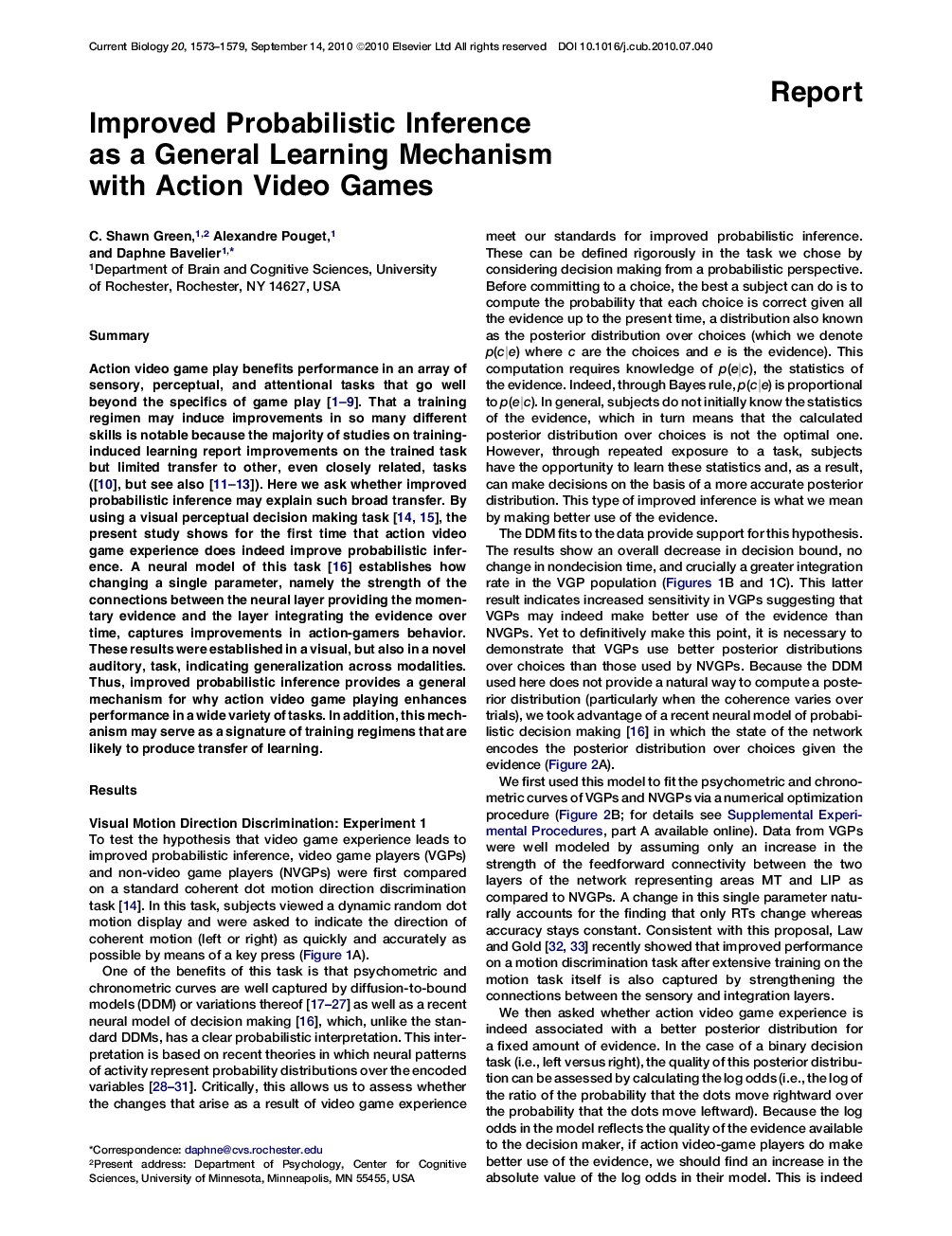| کد مقاله | کد نشریه | سال انتشار | مقاله انگلیسی | نسخه تمام متن |
|---|---|---|---|---|
| 2043436 | 1073361 | 2010 | 7 صفحه PDF | دانلود رایگان |

SummaryAction video game play benefits performance in an array of sensory, perceptual, and attentional tasks that go well beyond the specifics of game play [1, 2, 3, 4, 5, 6, 7, 8 and 9]. That a training regimen may induce improvements in so many different skills is notable because the majority of studies on training-induced learning report improvements on the trained task but limited transfer to other, even closely related, tasks ([10], but see also [11, 12 and 13]). Here we ask whether improved probabilistic inference may explain such broad transfer. By using a visual perceptual decision making task [14 and 15], the present study shows for the first time that action video game experience does indeed improve probabilistic inference. A neural model of this task [16] establishes how changing a single parameter, namely the strength of the connections between the neural layer providing the momentary evidence and the layer integrating the evidence over time, captures improvements in action-gamers behavior. These results were established in a visual, but also in a novel auditory, task, indicating generalization across modalities. Thus, improved probabilistic inference provides a general mechanism for why action video game playing enhances performance in a wide variety of tasks. In addition, this mechanism may serve as a signature of training regimens that are likely to produce transfer of learning.
► Action video game experience is shown to improve probabilistic inference
► Demonstrated via well-studied motion integration task and recent neural model
► Generality of effect demonstrated with novel auditory decision-making task
► Provides possible mechanism for wide transfer engendered by action game training
Journal: - Volume 20, Issue 17, 14 September 2010, Pages 1573–1579